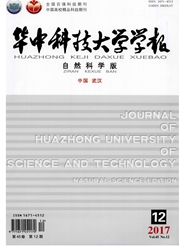

 中文摘要:
中文摘要:
以典型抗癫痫药物卡马西平为目标污染物,研究热活化过硫酸盐(thermally activated persulfate,TAP)技术对其的降解效果。此外,还考察了过硫酸盐初始浓度、温度和零价铁投加量等对降解效果的影响。结果表明,随着过硫酸盐初始浓度的增加,降解速率常数提高,不同温度下卡马西平降解速率常数与过硫酸盐初始浓度表现出良好的线性关系。提高系统温度能够提高卡马西平的降解速率。TAP氧化卡马西平符合拟一级动力学,反应活化能Ea为(120.4±2.6)kJ·moL^-1。在TAP系统中加入少量零价铁能够显著地提高卡马西平的降解速率和矿化度。当温度为60℃时,零价铁的最佳投加量为0.05 g·L^-1。硫酸自由基易于对卡马西平分子结构中氮杂卓环的烯烃双键进行攻击,主要生成羟基化卡马西平、环氧卡马西平、吡啶类醛和酮等中间产物。
 英文摘要:
英文摘要:
The antiepileptic drug carbamazepine (CBZ) was chosen as the target compound to investigate the degradation efficiency of an oxidation process by thermally activated persulfate (TAP). Furthermore, some key factors affecting this efficiency such as initial persulfate concentrations, temperature and zero-valent iron dosage were also evaluated. The resulted showed that the rate constant of degradating CBZ increased with increase of the initial persulfate concentrations. There appeared a linear relation between the degradation rate constant and the initial persulfate concentration. Elevating temperature could improve the carbamazepine degradation. Carbamazepine degradation by TAP oxidation abided by pseudo-first-order kinetics, activation energy (Ea) was (120.4±2.6) kJ·moL^-1. The degradation rate and mineralization degree for Carbamazepine can be significantly improved if a small amount of zero-valent iron was added into TAP system. When the system temperature set at 60℃, the optimum dosage of zero-valent iron was 0.05 g·L^-1. Sulfate radicals were prone to attack alkene double bonds in azepine ring and the main intermediate products found were hydroxycarbamazepine, epoxycarbamazepine, pyridine aldehydes and ketones.
 同期刊论文项目
同期刊论文项目
 同项目期刊论文
同项目期刊论文
 Degradation of 17β-estradiol by combined ultrasound/KMnO4 in an aqueous system Degradation of 17β-es
Degradation of 17β-estradiol by combined ultrasound/KMnO4 in an aqueous system Degradation of 17β-es Simultaneous Degradation of Estrone, 17beta-Estradiol and 17alpha-Ethinyl Estradiol in an Aqueous UV
Simultaneous Degradation of Estrone, 17beta-Estradiol and 17alpha-Ethinyl Estradiol in an Aqueous UV 期刊信息
期刊信息
